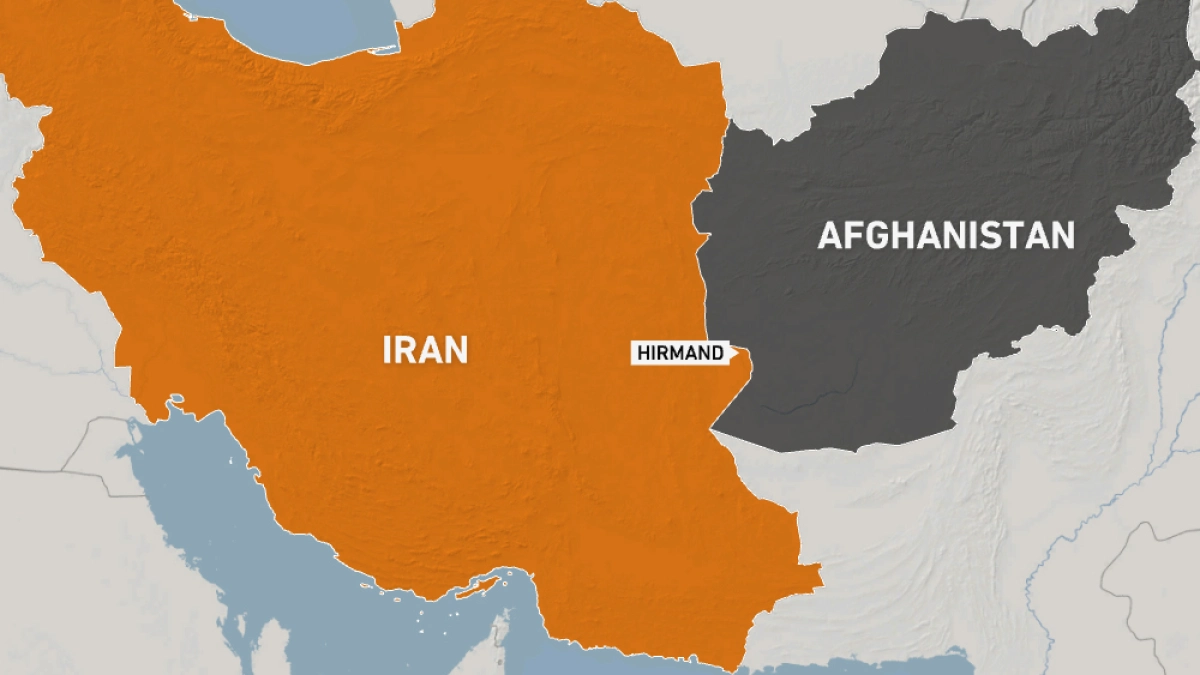Last week, deadly clashes broke out between Afghan and Iranian guards at their border raising fears of a new conflict.
Both sides have accused each other of initiating the shooting in which at least two Iranian and one Afghan guard were killed. However, they have issued measured statements aimed at de-escalating the situation.
Following the border violence, Iranian authorities closed the Milak-Zaranj border post, an important commercial crossing – and not the site of the clash – until further notice, Iran’s IRNA news agency reported.
Despite a treaty in place since 1973 on the sharing of Helmand River waters, the two sides have wrangled for decades. The river flows from Afghanistan towards eastern Iran.
What caused the fighting?
The reasons for the clashes are still unknown but the shooting at the border post between the Afghan province of Nimroz and Iran’s Sistan-Baluchistan province comes as Iranian President Ebrahim Raisi earlier this month accused Afghanistan’s Taliban rulers of restricting the flow of water to Iran’s eastern regions in violation of the 1973 treaty.
“We will not allow the rights of our people to be violated,” Raisi said on May 18.
The Taliban, which has denied the accusation, called on to “solve the problem” in accordance with the treaty. The Taliban, which remains diplomatically isolated since it came to power in August 2021, said it wanted “good relations” with Tehran.
According to Sina Toossi, a senior non-resident fellow at the US-based think tank Center for International Policy (CIP), there is a ““lack of clear demarcation and understanding of border boundaries and rules” from Taliban fighters since their takeover of Afghanistan in August 2021.
Iranian officials have repeatedly blamed the Taliban for its disregard for international laws and border protocols since its takeover of Afghanistan two years ago. Clashes have erupted on multiple occasions, but have rarely led to casualties and have been routinely blamed on “misunderstanding”.
A day before the border clashes, Iran’s Foreign Minister Hossein Amirabdollahian called on the Taliban to “follow legal framework” to resolve the water dispute.
“In recent years, this treaty has not been adhered to by Afghanistan’s rulers, including the Taliban,” CIP’s Toossi told Al Jazeera, adding that Kabul has delivered only “a fraction of the agreed amount”.
“It has been exacerbated by Iran’s worsening drought conditions, making the water issue increasingly critical,” he said.
The Taliban issued a statement saying it did not want to “fight with its neighbours”.
What is the Afghan-Iran water dispute?
The Helmand River, which is more than 1,000km (621-mile) long and flows across the border, is being dammed on the Afghan side to generate electricity and irrigate agricultural land.
Drought has been a problem in Iran for some 30 years, which has worsened over the past decade, according to the United Nations Food and Agriculture Organization (FAO). The Iran Meteorological Organization says that an estimated 97 percent of the country now faces some level of drought.
According to the Helmand Water Treaty signed by Afghanistan and Iran half a century ago, Afghanistan should annually share 850 million cubic metres of water from Helmand with Iran.
It also calls on both sides to address their differences via diplomatic channels and, if that fails, through an advisory board headed by a mutually chosen arbitrator.
Iran has accused Afghanistan of failing to adhere to the treaty on several occasions and has opposed its decision to construct dams on the river.
How have both countries reacted to the clashes?
The Taliban leadership has called for the resolution of such issues “through diplomatic channels”.
“We don’t want relations with our neighbouring countries to deteriorate. The Islamic Emirate of Afghanistan is never in favour of escalation,” Hafiz Zia Ahmad, deputy spokesman of the Ministry of Foreign Affairs, told Saudi Arabian newspaper Arab News on Monday.
Meanwhile, Seyed Rasoul Mousavi, head of South Asia division at Iran’s foreign ministry, has urged both countries to avoid conflict as it would be detrimental to them.
“If the people and elites of the two countries are smart, any kind of conflict is to the strategic disadvantage of both,” he tweeted.
Analyst Toossi believes the border clashes have prompted both sides to de-escalate the situation and “reaffirm their commitment to dialogue and cooperation”.
He said there is an indication that Iran is open to dialogue, given that the Taliban’s acting foreign minister met an Iranian envoy to discuss the Helmand River water rights on the day of the clash.
Where does the Afghan-Iran relationship stand?
As Kabul and Tehran are “trying to balance their interests and concerns”, according to Toossi, their relationship remains in a state of “uncertainty”.
“It is not clear whether the Taliban have pulled back their fighters from the border or whether they will abide by the agreement in the future,” he said after videos showed large numbers of Taliban fighters approaching the border with Iran last week.
He said the water dispute between both countries is likely to remain a “contentious issue” as they face increasing water scarcity and demand.
Additionally, while Iran has held a dialogue with the Taliban, it has not officially recognised them as the legitimate rulers of Afghanistan.
The Shia-majority country has called for the formation of an inclusive government that represents all ethnic and religious groups in Afghanistan.
“Iran has expressed concerns about the security and welfare of the Afghan people, especially the Shia Hazara minority, who have faced persecution and violence from the Taliban in the past,” said Toossi.

